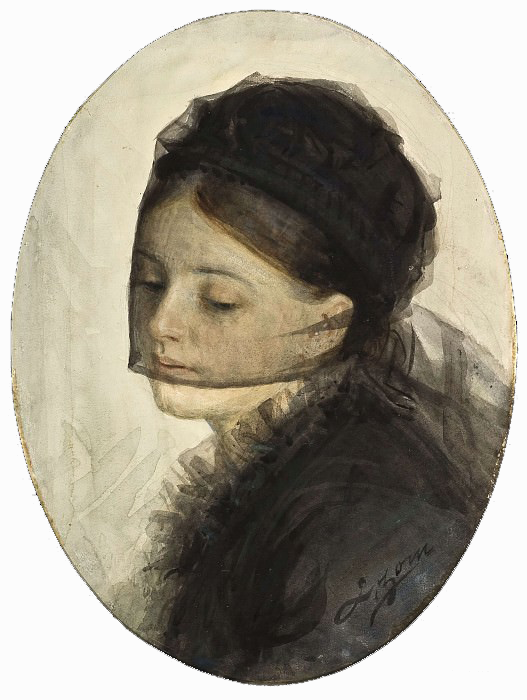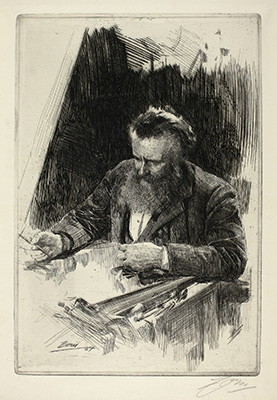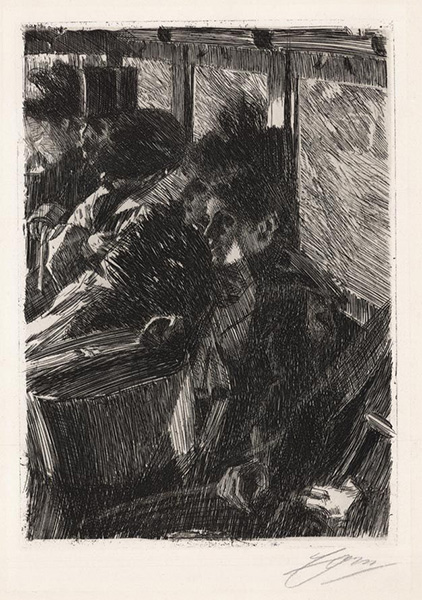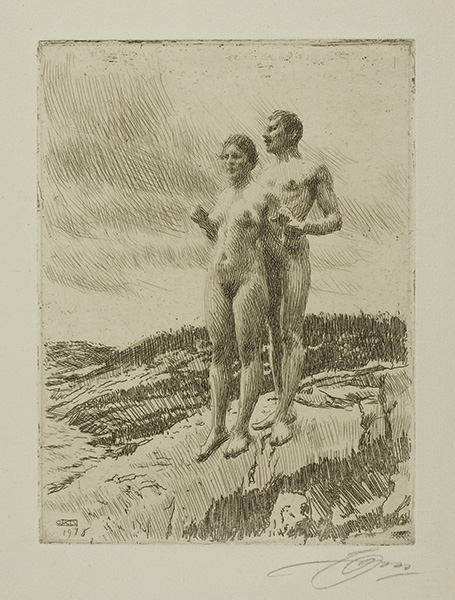While Americans recognize the great John Singer Sargent, the Swedes applaud the illustrious Anders Leonard Zorn. Sargent is best remembered for his important portraits and landscapes, while Zorn is heralded for his overall creative genius as a watercolorist, oil painter, sculptor, woodcarver, and extraordinary etcher.
Who was Anders Zorn and why is he so important? Why is he recognized as
Zorn was born in
Anders Zorn was raised by his grandparents in Mora. At the age of 12 he was sent to a school in Enkoping, and at age 15 he entered the Royal Academy of Art in

At the Academy exhibition of 1880, Zorn exhibited a watercolor called In Mourning. It attracted the attention of King Oscar II of

By the mid 1880’s Anders Zorn had developed his abilities and was now very accomplished. He produced a total of 289 etchings, many of which are very well known. The portrait of Ernest Renan was executed in 1892, Auguste Rodin in 1906, and August Strindberg in 1910. As Zorn had great admiration for the Dutch Master Rembrandt, whom he considered to be the master in this medium, he collected Rembrandt’s works.
In 1885 Anders Zorn and Emma Lamm married. The following decade the couple was abroad in England and Paris, but they always returned to Mora during the summer season. Following 1885 Zorn spent much time traveling with Emma and painting in St. Ives in
During this period he achieved much success and fame. His important painting, Fisherman at St. Ives, was shown in the Paris Salon, where it won honorable mention. It was quickly purchased by the French Government for the Musee de Luxembourg. In 1891 Zorn made an etching after the painting.
Zorn’s expertise as an etcher was his ability in the cross-hatching technique to block in design, line, and shading. His main concern was achieving success with the capturing of light on his subject. He completed a number of genre images that focused on the depiction of light and shadow. In The Waltz, produced in 1891, the dark cabinet in the foreground is lit by the lights of the ballroom in the background. In Omnibus, etched in 1892, the lights flicker over the passengers of a

Zorn brought to etching a watercolorist’s technique: quick, free handling without significant reworking. If an effect was wrong, another plate was begun. Zorn’s method was his strength, as well as his weakness. It resulted in an instantaneous quality, as if a scene were briefly and brilliantly illuminated by a flash. His astounding skill with the etching needle can be traced back to his ability as a woodcarver.

Zorn’s etching oeuvre falls into three categories: portrait studies, genre scenes, and his most sought after, the nudes, especially those depicted outdoors. His portraits include many Swedish people, such as Mona (the artist’s mother), Olga Bratt, Emma Rasmussen, Madonna, August Strindberg and Mme Simon II. The image of Ernest Renan, an important historian and philosopher, is recognized as Zorn’s chef-d’oeuvre. It is one of the outstanding etched portraits of all time, worthy to stand beside Rembrandt’s greatest works. Zorn’s portraits of the Swedish royalty include: King Oscar II, Queen Sophia and The Crown-princess Margaret of
Zorn also etched portraits of many prominent Americans: Isabella Gardner of Boston; August Saint Gaudens, the celebrated sculptor; E. R. Bacon, the railway king from
The genre scenes claim an important rank in Zorn’s oeuvre. In The Waltz, for example, he achieved the swirling movement of the dancing figures by the rhythmical arrangement of the lights and darks. Other images worth noting are: Omnibus, Sunday Morning, The New Maid, Dance At Gopsmor and The Bride’s Maid.
As for his nude studies, Zorn etched many of his models in interior settings. The motif that he was renowned for, however, was the nude depicted outdoors. The movement of water and the reflection of light on its surface had long fascinated him. Now, he further complicated the situation by placing a model beside or in the water, as in Seaward Skerries, Dagmar, The Ford and Hemula II. His interior nudes include: Early, Before The Stove, The Hair Ribbon, Bust and Cabin.
Zorn’s health deteriorated considerably during his last years. He died in 1920 at the age of 60. His funeral was attended by representatives of the Swedish royal family and many cultural personalities. He was buried in
Zorn, through his own talent, realized great wealth and international fame. He had been embraced with affection by the best society of England, France and America — a wonderful achievement for an illegitimate child who came from modest means.
The record shows that Zorn etchings were, and still are, very collectible. In January 1937, just 70 years ago, the sale of the collection of Stanton Griffis was held at the American Art Association Anderson Galleries in
This post was written by Ernest S. Kramer. Ernest S. Kramer Fine Arts & Prints is a noted dealership in late 19th and early 20th century prints and drawings with an emphasis on the 1920’s, 30’s and 40’s. One of the major specialties of the gallery is Anders Zorn. With more than seventy Zorn etchings in inventory, including many important and rare images, he arguably has the largest repository of Zorn etchings in North America. The etchings are priced from $1750 to $35,000; with many works in the $2500 to $4,000 price range. Please visit his website at www.kramerfineart.com to see the full range of offerings. To arrange a private showing, please contact Ernest S. Kramer at 781-237-3635 or ernestskramer@verizon.net.


